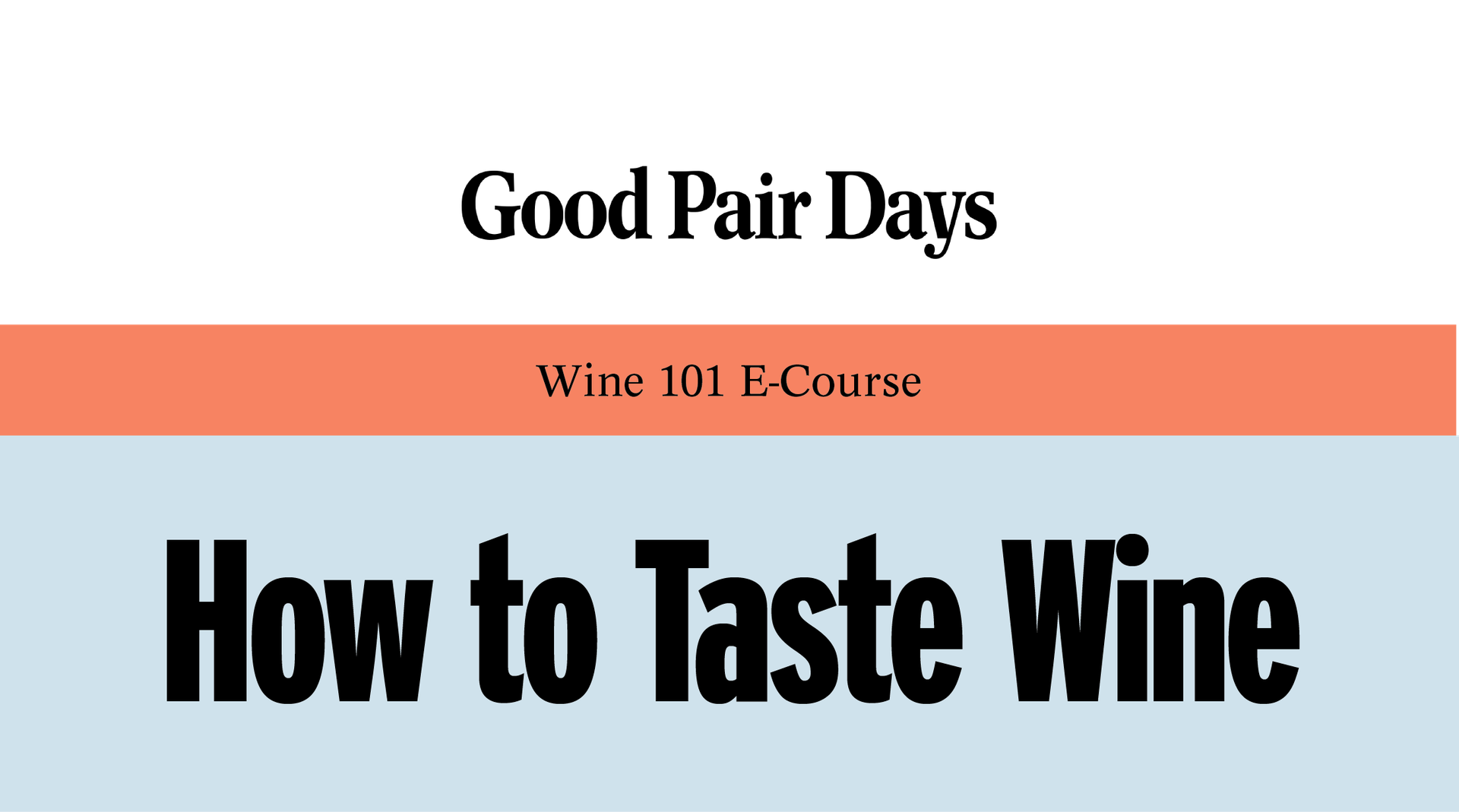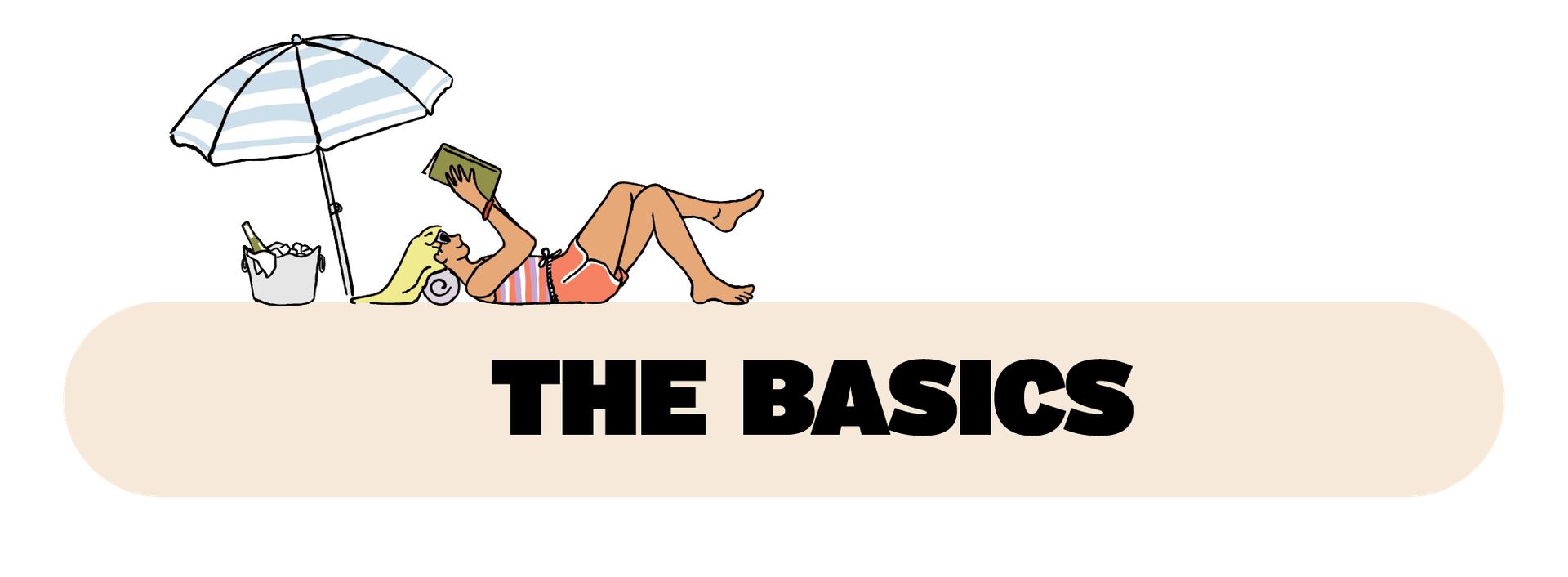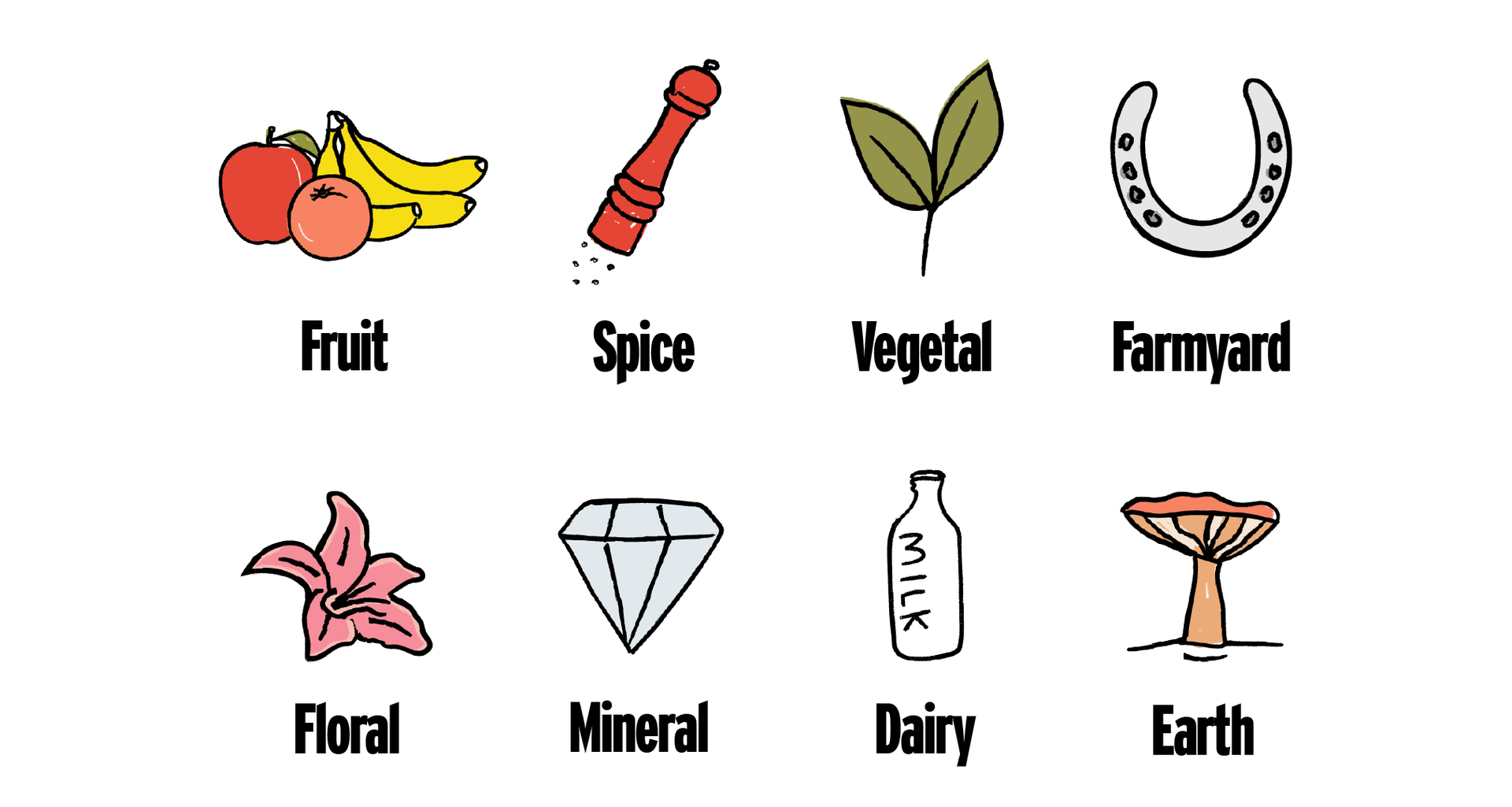

Learn everything you need to know about tasting wine. You don't need a super nose for it or any fancy tools, instead just a solid understanding of how wine and your palate work together.


Welcome to the start of your online wine course! Imagine yourself, only four weeks from today, having completely upped your wine game. New knowledge, stronger tasting skills and more confidence when it comes to all things wine!
Today we are kicking off the course with everything you need to know about tasting wine. You don't need a super nose for it or any fancy tools, instead just a solid understanding of how wine and your palate work together. From there it's just practice. And the more you taste, the better a taster you'll become!
Your wine coaches,
Banjo & Alex

It all starts through the glass with sight; taking a good look at the wine, its colour, rim variation (the colour from the centre to the rim of your glass), viscosity, brightness and the wine's clarity. So much can be learnt about the wine from its colour — like the grape type, winemaking techniques used, the age of the wine and more — just based on these visuals. Yes, before you even dunk your nose in the glass!
After you've given the wine a solid assessment, next comes the nose. Did you know that most of what you taste in a wine, you actually smell first? Our olfactory receptors are one of the most important sensors when it comes to how we experience taste. This is why when you have a stuffed nose you can't taste wine as well, and often it has muted flavours. So make sure you give your nose some time to get to know the wine! (And don't get sick!)
TIP: Wine feeling a little extra muted or not giving you a lot to smell? Give the wine a swirl. This introduces more oxygen into the wine which can help release aromatic compounds. The temperature of wine can also affect how it expresses its aromas.
We've had a good smell and like what's happening. Now for the good bit, a taste assessment. Take a moderate taste of the wine, to begin with. You don't want to overwhelm your palate. Keep the wine in your mouth. Swish it around a little if you can — no need for gargling, but let it come into contact with all parts of your mouth, and breathe in a little bit of air.
Do you taste the flavours all the way down? Can you still taste them after you've swallowed? Are there a lot of flavours, or just a couple?
Most of all, and best of all, did you enjoy it? Was it pleasurable? If so, why, or why not?

It's okay if you don't have the exact words to describe the wine yet. We'll cover more on what you should be paying closest attention to below. But before you scroll, master these basics with some further reading on how to do your 3 step sight, smell, and taste like a pro.

The structure of a wine can be overshadowed by talk about aromas and flavours in a wine but is of vital importance to pay attention to. It is the framework that sets the stage for assessing the quality of the wine, how it will age, how it will best pair with foods, and can indicate things like the origin of the wine, grape type, and vintage!

The five main structural elements are sweetness, acidity, tannin, body and alcohol. All of these can only be accessed on the palate (in the mouth).
Sweetness
The amount of sugar in a wine after fermentation.
Sweetness in a wine tastes... well sweet of course! But not all wines that "taste" sweet are sweet. Sometimes very ripe fruit flavours in a wine can make the wine seem sweet even if the wine is dry (aka not sweet).
Sweetness in wine is simply how many grams of sugar remains in the wine after the fermentation (aka residual sugar or "RS").
To determine if a wine is sweet, instead of just having sweet ripe fruit flavours, lick your lips after sipping the wine. If your lips feel a touch sticky or taste sweet, it's likely sweetness from the wine.
Sweetness can be detected and measured on a scale. Most wines we drink are considered dry and a few are off-dry.

How could we talk about sweetness in wines without mentioning sweet/dessert wines? If you're ready to take a rabbit hole dive, you can take things to the next level and learn more about sweet/dessert wines too!
Acidity
The tangy, sour taste which makes wine feel fresh!
A wine that has high acidity feels crisper and tastes tart on the palate — a refreshing sensation. A wine with low acidity will feel softer and rounder on the palate. You can determine the level of acidity in a wine by how much the sides of your mouth water after a sip of wine. The more saliva your mouth generates, the higher the acidity!
TIP: Often the best food and wine pairings are wines that contain high levels of acidity. This is because the acidity can complement richness in foods and also sing in harmony with fresh components of the dish, making sure your palate feels bright, alive and fresh — never flat!
Tannin
Compounds that give wine astringency and texture.
Tannins in wine are compounds from the skins, seeds and stems of the grapes. They contribute bitter and astringent flavours but also a jagged, corrugated texture to wine.
You can detect tannins by a slightly bitter flavour and how drying a wine feels on the palate. The drying feeling of wine high in tannin can make it feel like the saliva has been vacuumed right out of your mouth, especially on your gums! This sensation can be compared to other things like black tea or dark chocolate which can also be both slightly bitter and mouth-drying.

Tannins are really important for red wines, as these compounds contribute to their deeper colour. It's also why tannins are rarely found in white wines and rosé wines. They also allow wines to age more harmoniously and help with food and wine matching, especially when it comes to fats and proteins!
Alcohol
How much heat and booze a wine has in it.
At lower levels, like in beer, it can be challenging to notice the 'flavour' of alcohol, but once you have a wine of at least 13% alcohol or so, you will begin to notice a warming sensation toward the back of your palate. You can detect this by holding a bit of wine in your mouth and then taking a big breath of air in — the hotter it feels on the back of your throat, the higher the level of alcohol is.
The amount of alcohol in a wine will affect how much body the wine has (more on that below) as well as how the wine pairs with foods. In particular, spicy food. Since the alcohol in wine can already create a hot sensation on your palate, when you add chilli heat, it can dial up the heat that much more. This is not usually for the better unless you're a real heat freak!
Some grape types and regions are known for making wines that are higher in alcohol than others, this has to do with climate and the genetic make-up of some grapes.
Body
How rich or round a wine feels on the palate.
The body of a wine is generally a combination of the alcohol level and winemaking techniques such as oak ageing and malolactic fermentation. Wine that is full-bodied will hold more weight on the palate, they are powerful wines with lots of impact. Whereas light-bodied wines on the other hand will be quite delicate and often fresher. Think about the palate weight difference between coconut water (light body) skim milk (medium body) to full cream (full body).

Tasting notes for wines can often seem over the top and wild... freshly picked chives? Overripe peaches? Spring morning dew? We get it. It can sound absurd. But there is some method to the madness!
The descriptions can still be a bit flowery (no pun intended for floral notes!), so we've broken them down into categories that help you imagine where the flavours of any given wine might lie.

Fruit Flavours:: various fruit families such as citrus fruit, orchard fruit, tropical fruit, etc.
Spice: pepper, anise, cinnamon, nutmeg
Vegetal: grass, capsicum, tobacco leaf, jalapeño, flower stem
Farmyard: barnyard, cheesecloth, sweaty horse
Floral: roses, violet, cherry blossom,
Mineral: rainwater, river stones, crushed gravel, flint, salt
Dairy: sour cream, yogurt, butter
Oak: vanilla, coconut, nuts, toast, spice
Earth: soil, clay pot, forest floor, mushroom
Herbs: thyme, oregano, tarragon, rosemary
What Flavours Mean
Once we understand the different flavours that pop up in a glass of wine, it's useful to know where these flavours come from, and why. Why does a Cabernet from Bordeaux taste different to one from Australia? What about the stylistic difference between Pinot Noir from California vs Burgundy? Most of the time the answers are related to winemaking traditions of the region, climate and local laws. But you can identify these differences with practice and a fine-tuned palate for the details!

Key Reading
1. Wine Tasting Guide: Become an expert taster with our tips and a few bottles.
2. Main Characteristics: Learn what to look out for every time you sniff or slurp up a glass.
Bonus Reading (for the keeners!)
3. Learn more about how to detect minerality in wine.
4. Learn how to taste oak in wine.
5. Learn how wine temperature can affect the way it tastes.
Quiz!
Ready to prove your new wine tasting skills? Take the Chapter 1 How to Taste Wine Quiz! You'll earn your Chapter 1 Badge as well as 50 points by scoring 7/9 correct!
Homework
The best kind of assignment... tasting!
Pick a bottle of wine and take it through a full tasting! Start with the sight, then move to the nose, and finally the palate. Consider each of the ways to detect the structure of a wine, and have fun pinpointing specific flavours.
If it's a Good Pair Days wine, you can log in and go to "My Cellar" to take our Taste Test Challenge to practice until you earn a perfect score, too!
If you don't have an opportunity to open a bottle before the next course, that's okay too! Many well practised tasters will smell perfumes, fruits, flowers...anything really, just to really lock into their heads what something smells like. It pays off when you can differentiate between a strawberry and raspberry just by smell! So your homework will take place during your next visit to the grocery store, where you will practice your smelling. Smell the truss on the tomatoes, pick up some herbs, if you walk by some roses, do stop, close your eyes and smell and lock in the aromas to your own library of new wine notes you can use!

You did it! Course 1 of 8 complete. You're already off to a great start! We hope you learned something new that you can bring to your next tasting, whether it be on your own or with friends.
We can't wait to hear how the assignment goes and what discoveries you uncover! After all, the best way to learn is by tasting. Take that, Math class!
Happy Wine Learning,
Alex & Banjo
Do you know your wine personality? If your answer is no, take our quiz to find out which wines to pick up next and build your box!
Build my box





